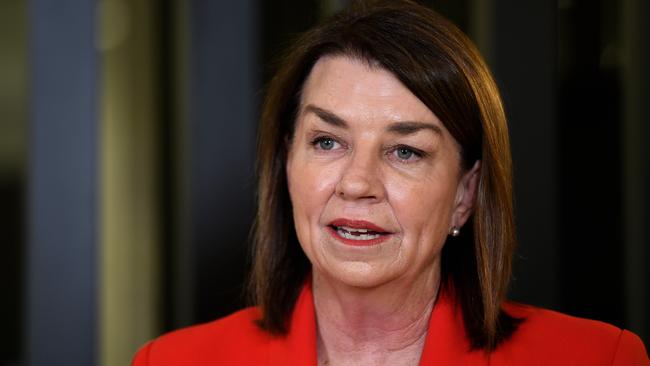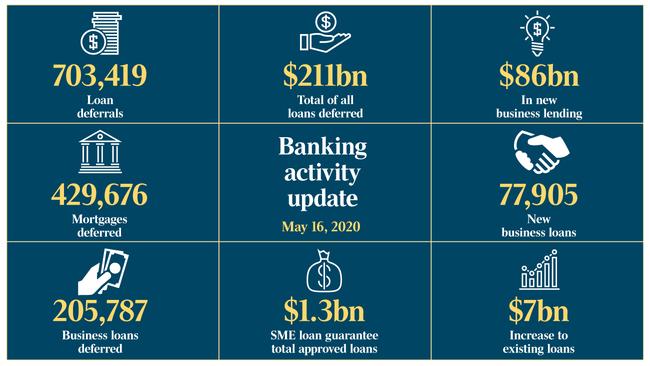NAB to query its mortgage loan reprieve customers
NAB will start calling the 80,000 borrowers who signed up for the mortgage holiday to see if they can begin making repayments.

Two months after declaring a six-month repayment reprieve would be available for home loan customers hit by the coronavirus crisis, NAB from this week will start calling the 80,000 borrowers who signed up for the mortgage holiday to see if they can begin making repayments.
The move by NAB is at odds with its initial announcement in March, in which it said it would check in with borrowers at the three-month mark. It is also in contrast to the other big banks, which all confirmed to The Australian they would wait until the three-month period passes before contacting customers.
A NAB spokesperson told The Australian the bank was beginning the process early to ensure it had contacted all 80,000 home loan customers by the three-month checkpoint.
The bank is adding 500 staff to its support team to help with the check-in process and will call customers instead of using digital communications “to gain a deeper understanding of their situation”. In the calls, NAB bankers will outline the position of the customer’s home loan, as well as the future impact of the repayment pause on their loan balance. The bankers will also ask customers about their plans for the months ahead.
The 40,000 business customers that also availed of NAB’s six-month loan repayment holiday would be contacted “at a later date”, the bank said.
The big four banks have in recent weeks set aside billions of dollars for COVID-19-related bad debts, but NAB’s provisions, at $807m, are lower than its peers. ANZ has set aside $1bn, while Commonwealth Bank and Westpac have booked provisions of $1.5bn and $1.62bn respectively.
NAB was also the only major lender to pay an interim dividend last month, with ANZ and Westpac deferring their payout decisions until later in the year. CBA reported earlier in the year and announced its interim dividend before the COVID-19 crisis hit.

As the nation’s lenders reach the two-month point of the mortgage holidays, Australian Banking Association CEO Anna Bligh has confirmed that banks were in discussions with the regulator to explore options that will give customers “a clear path” out of the coronavirus crisis once the six-month repayment break comes to an end.
The ABA over the weekend released figures showing 429,000 borrowers had hit pause on their mortgage repayments, totalling more than $150bn, since late March.
One in 14 home loans is now on a six-month repayment break as the nation struggles through the coronavirus shutdown, while the total number of deferrals granted by the banks, including business loans, has climbed to 703,000, worth $211bn.
While the pace of deferrals has slowed since it was first announced in March, the numbers are still growing. In the past week, banks approved 60,000 requests from under-pressure customers, compared with 100,000 over the seven previous days.
Looking ahead to September, when the bulk of the six-month deferrals will come to an end, Ms Bligh said banks wanted to “do the right thing”.
“This is something, quite rightly, that they need to work through with the regulator,” Ms Bligh said. “They want to give customers a clear path out of this. And they’re working through that right now, (they’re) working through various options, talking to the regulators. All parties are in an environment that’s completely without precedent, so it needs to be done carefully and thoughtfully and rigorously.”
One aspect of the discussions between the banks and APRA may centre around the treatment of home loans if customers are unable to make repayments at the end of the six-month period. APRA in March told banks they did not need to classify the deferrals as loans in arrears, providing some much-needed breathing space for lenders and borrowers through the crisis.
Lenders were “acutely aware” of the pressures facing borrowers, Ms Bligh added.
Data released by the Australian Bureau of Statistics last week showed that just under 600,000 people lost their jobs in April, pushing the official unemployment rate up to 6.2 per cent.
More than six million people, meanwhile, are on the government’s JobKeeper program, which gives businesses $1500 per worker each fortnight in order to keep them employed.
Employers then pass on the payments to their staff. The scheme, which has kept millions in employment during the shutdown, is also due to finish in September around the time when homeowners will need to go back to paying off their mortgages.
Amid calls for the JobKeeper program to be extended, Scott Morrison on Friday said it was “premature” to discuss any changes, but indicated that Treasury would undertake a review into the scheme in the coming weeks.
While describing the number of loan deferrals as “astonishing” and higher than expected, Ms Bligh said there was no cause for concern about the strength of the financial system during the COVID-19 crisis.



To join the conversation, please log in. Don't have an account? Register
Join the conversation, you are commenting as Logout